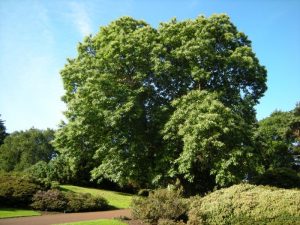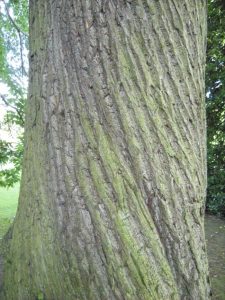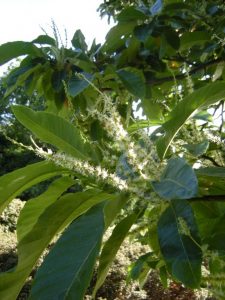Castanea sativa is a dominant tree with deeply fissured and twisting bark. The mature specimen at the rock garden divides into three giant limbs at a height of two metres. The fourth, ripped off in a long forgotten storm, now produces epicormic shoots.
Passing by there is a distinctive scent given off by the flowers. The long catkin holds the male flowers; the anthers and filaments. Tucked in at the base of these are the embryo sweet chestnuts, easily recognisable as an immature shape of the prickly shelled husks holding the brown nut.
Requiring a warmer climate to fill out to edible status than Edinburgh usually provides the nuts are disappointingly empty in late August – September when the harvest occurs in its natural geographical zone of southern Europe, North Africa and Asia Minor.
An observation picked up by the Phenology team is that of the four examples of C. sativa growing in the Garden; the rock garden tree is the only one to produce male flower parts on the catkin. The prominent white anthers are evident in the attached image.



